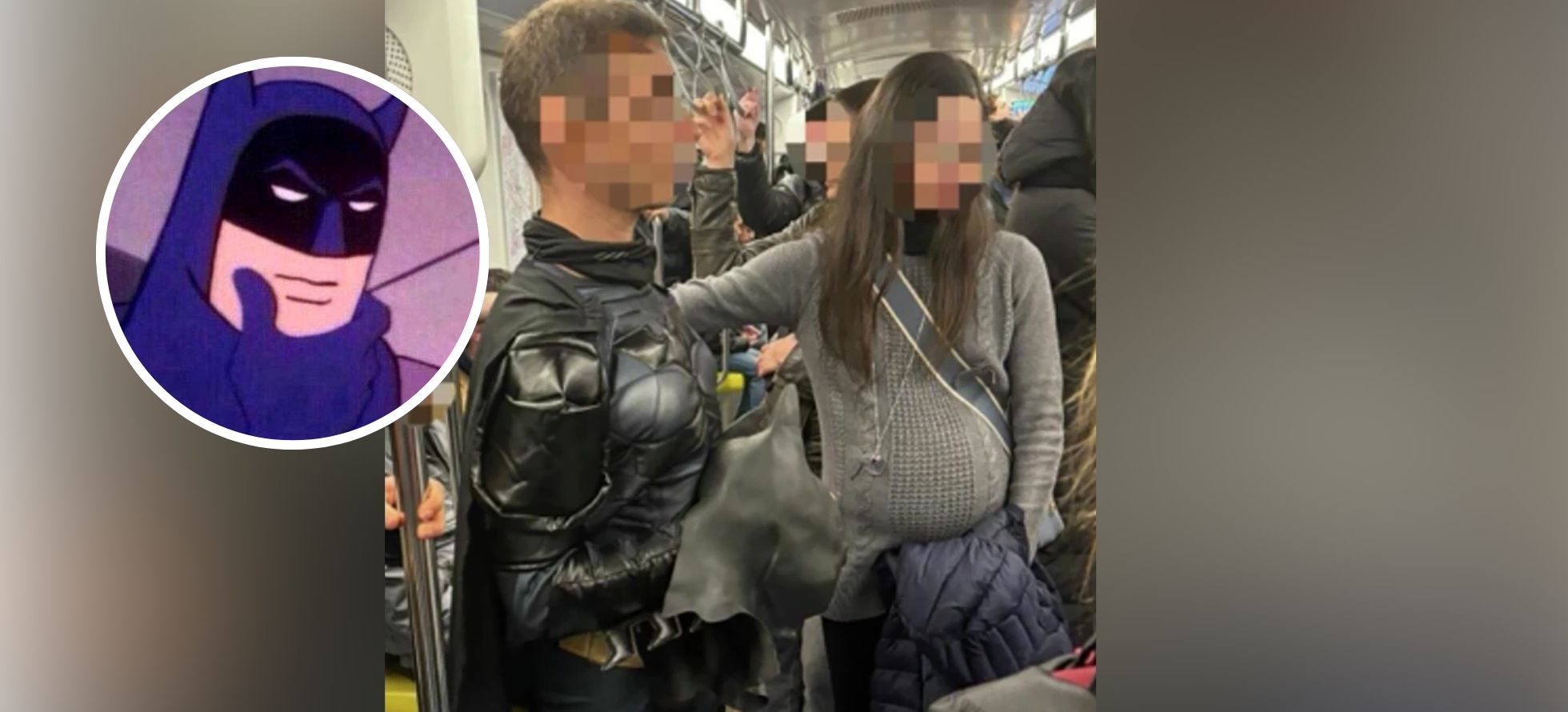Scientists have discovered an unlikely hero in the quest to make strangers kinder: a caped crusader riding the subway.
In a fascinating field experiment conducted on Milan’s metro system, researchers found that passengers were dramatically more likely to offer their seats to a pregnant woman when someone dressed as Batman happened to be on the train. The presence of the costumed figure nearly doubled the rate of polite behavior, with seat-offering jumping from 38% in normal conditions to 67% when the superhero appeared.
The study, published in npj Mental Health Research, tracked 138 metro rides across two scenarios. In both, a female researcher wearing a prosthetic pregnancy belly boarded crowded trains where all seats were occupied. The twist came in the experimental condition: another researcher dressed in Batman’s iconic cape and cowl entered through a different door, standing roughly ten feet away without any interaction with the pregnant passenger.
What makes these findings particularly intriguing is that many people who offered their seats didn’t even realize they’d been influenced by the unusual passenger. When researchers interviewed those who gave up their spots in Batman’s presence, a striking 44% reported they hadn’t noticed the costumed figure at all.
“Nobody directly associated their gesture with the presence of Batman,” the study authors noted. Instead, passengers credited their decision to social norms, proper upbringing, or concerns about safety during pregnancy.
The research team believes the superhero’s presence works by disrupting the autopilot mode that governs much of our behavior in routine settings like daily commutes. This interruption may jolt people into a state of heightened awareness about their surroundings, making them more attuned to the needs of others nearby.
The phenomenon resembles what psychologists call mindfulness—paying deliberate attention to the present moment—except that it happens spontaneously rather than through meditation or conscious effort. When routine patterns are broken by something unexpected, people may naturally shift from passive observation to active engagement with their environment.
Among those who did offer their seats, women outnumbered men in both conditions, representing about 68% of helpful passengers when Batman was present and 66% in normal circumstances. The average age of those who assisted was around 41-42 years old across both scenarios.
To ensure fairness and avoid confounding variables, researchers cleverly ran both conditions simultaneously on different metro cars, with teams positioned so they couldn’t see each other. Each observation lasted only one stop—typically two to four minutes—before the teams exited and repeated the process on the next train.
For ethical reasons, the researchers opted not to use Batman’s full face mask, which might have frightened some passengers. Still, the costume retained its signature elements: the cape, the chest emblem, and the distinctive pointed cowl that left the character unmistakable.
The study authors acknowledge that the exact mechanism behind this “Batman effect” remains somewhat mysterious. One possibility is that the superhero costume primes people to think about heroism and helping others, activating cultural associations with positive values. Batman, after all, represents justice, protection, and standing up for those in need.
However, there’s a catch: many psychology experiments involving subtle “priming” effects—where exposure to certain images or words supposedly influences later behavior—have failed when other scientists tried to replicate them. The researchers note this cautionary tale, suggesting their results might stem from something more straightforward than subconscious priming.
Another explanation involves what behavioral scientists call the “pique technique,” where unusual or atypical stimuli interrupt automatic responses and make people more likely to comply with requests or notice opportunities to help. The Batman costume certainly qualifies as atypical for metro transit.
Perhaps most fascinating is the possibility that attention itself spreads socially. We’ve all experienced the phenomenon where a group of people suddenly look in the same direction, drawn by others’ gaze even if we don’t initially see what caught their interest. The researchers suggest a similar contagion might explain why people who never noticed Batman still behaved more prosocially. The disruption may have rippled through the train car, with some passengers’ heightened awareness influencing others nearby through subtle social cues.
The implications extend beyond amusing superhero encounters. If unexpected but non-threatening events can reliably boost kindness and cooperation, urban designers and policymakers might deliberately incorporate “positive disruptions” into public spaces. Imagine street art that surprises commuters, flash performances in busy squares, or creative installations designed specifically to shake people out of their routine indifference.
The research does have limitations. It took place in one city’s transit system, and cultural factors might make the effect stronger or weaker elsewhere. The superhero chosen carries specific positive symbolism that might not apply to other unexpected figures. Would a person dressed as a pirate, a robot, or a medieval knight produce the same boost in politeness? That remains an open question for future research.
Scientists will need to test whether different types of surprising events—varying in emotional tone and cultural meaning—produce similar results.


